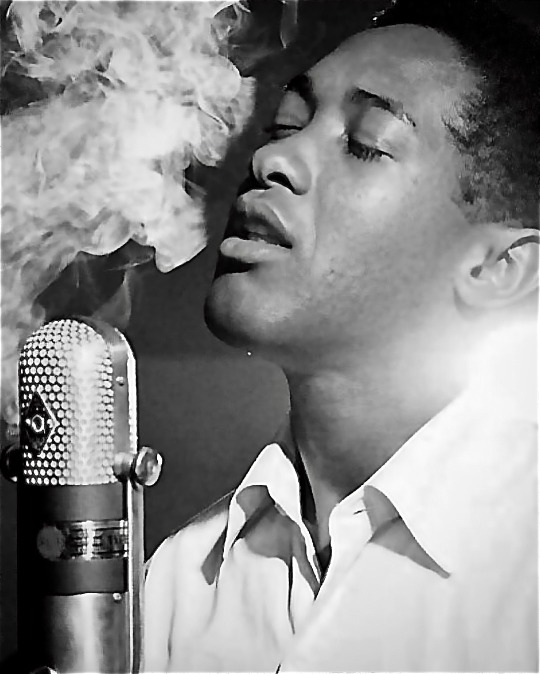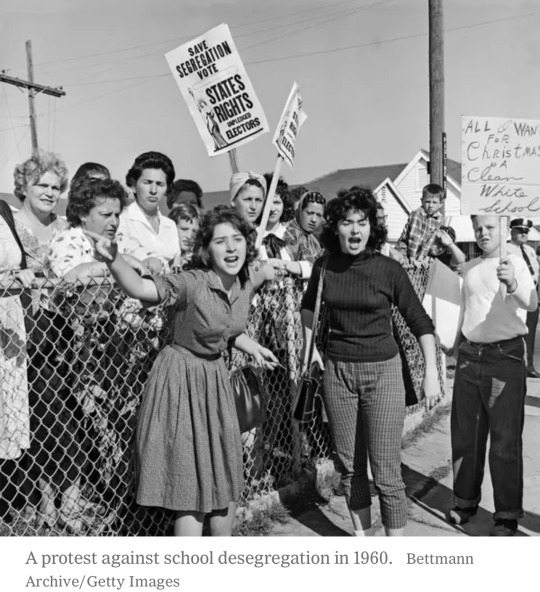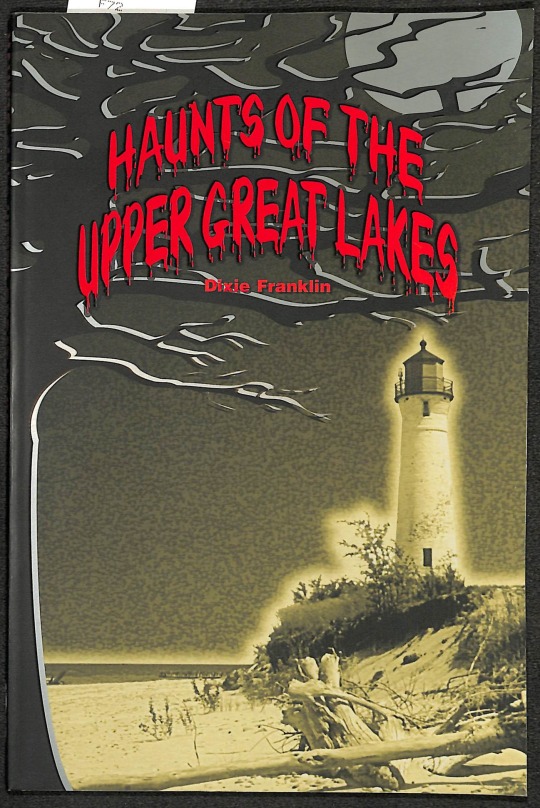#franklin mississippi
Explore tagged Tumblr posts
Text
Remembering Erma Franklin 🌹🕊on her Birthday 🎂
4 notes
·
View notes
Text

Old Maps, Alabama & Mississippi, Franklin County
1 note
·
View note
Text

Today In History
Sam Cook, considered to be a pioneer and one of the most influential soul artists of all time, Cooke is commonly referred to as the “King of Soul” for his distinctive vocals, notable contributions to the genre and significance in popular music.
Cooke was born in Clarksdale, Mississippi, on this date January 22, 1931, and began his singing career with a gospel group known as the Soul Stirrers.
Going solo in 1957, Sam Cooke released a string of hit songs, including “You Send Me”, “A Change Is Gonna Come”, “Cupid”, “Wonderful World”, “Chain Gang”, “Twistin’ the Night Away”, “Bring It On Home to Me”, and “Good Times”.
Cooke’s pioneering contributions to soul music contributed to the rise of Aretha Franklin, Bobby Womack, Al Green, Curtis Mayfield, Stevie Wonder, Marvin Gaye, and Billy Preston, and popularized the work of Otis Redding and James Brown.
CARTER™️ Magazine
#sam cooke#carter magazine#carter#historyandhiphop365#wherehistoryandhiphopmeet#history#cartermagazine#today in history#staywoke#blackhistory#blackhistorymonth
127 notes
·
View notes
Text








I would like to repost the story of Loy Allen Bowlin, also known as The Original Rhinestone Cowboy, who was an outsider artist from McComb, Mississippi. His artwork largely included bejeweling his clothing, Cadillac, home and even his dentures with thousands of rhinestones.
"Loy Bowlin’s bejeweled dentures—a different color rhinestone on each tooth, two front teeth framed in gold—were a prelude to his creative output. Born on a cattle ranch in Franklin County, Mississippi, in 1909, Bowlin was a shade-tree mechanic and former used car salesman, who, upon retiring, took on a persona as McComb, Mississippi’s “Original Rhinestone Cowboy,” with a sparkling Western suit for each day of the week and a highly ornamented blue 1967 Cadillac to match. Inspired by Glen Campbell’s 1975 hit recording, and, depending on what version of the story—divine intervention—Bowlin became compelled to adorn everything he touched. In doing so, he was able to move beyond a life previously characterized by divorce and depression and into a bold new existence that drew people closer to share in his sense of joy and wonder." Continue reading
https://hyperallergic.com/.../the-original-rhinestone.../...
https://misspreservation.com/.../going-inside-loy.../
https://www.kohlerfoundation.org/.../major.../loy-bowlin/?
23 notes
·
View notes
Text

James Earl Jones
American actor hailed for his many classical roles whose voice became known to millions as that of Darth Vader in Star Wars
During the run of the 2011 revival of Alfred Uhry’s Driving Miss Daisy in London, with Vanessa Redgrave, the actor James Earl Jones, who has died aged 93, was presented with an honorary Oscar by Ben Kingsley, with a link from the Wyndham’s theatre to the awards ceremony in Hollywood.
Glenn Close in Los Angeles said that Jones represented the “essence of truly great acting” and Kingsley spoke of his imposing physical presence, his 1,000-kilowatt smile, his basso profundo voice and his great stillness. Jones’s voice was known to millions as that of Darth Vader in the original Star Wars film trilogy and Mufasa in the 1994 Disney animation The Lion King, as well as being the signature sound of US TV news (“This is CNN”) for many years.
His status as the leading black actor of his generation was established with the Tony award he won in 1969 for his performance as the boxer Jack Jefferson (a fictional version of Jack Johnson) in Howard Sackler’s The Great White Hope on Broadway, a role he repeated in Martin Ritt’s 1970 film, and which earned him an Oscar nomination.
On screen, Jones – as the fictional Douglass Dilman – played the first African-American president, in Joseph Sargent’s 1972 movie The Man, based on an Irving Wallace novel. His stage career was notable for encompassing great roles in the classical repertoire, such as King Lear, Othello, Hickey in Eugene O’Neill’s The Iceman Cometh and Big Daddy in Tennessee Williams’s Cat on a Hot Tin Roof.
He was born in Arkabutla, Mississippi, the son of Robert Earl Jones, a minor actor, boxer, butler and chauffeur, and his wife Ruth (nee Connolly), a teacher, and was proud of claiming African and Irish ancestry. His father left home soon after he was born, and he was raised on a farm in Jackson, Michigan, by his maternal grandparents, John and Maggie Connolly. He spoke with a stutter, a problem he dealt with at Brown’s school in Brethren, Michigan, by reading poetry aloud.
On graduating from the University of Michigan, he served as a US Army Ranger in the Korean war. He began working as an actor and stage manager at the Ramsdell theatre in Manistee, Michigan, where he played his first Othello in 1955, an indication perhaps of his early power and presence.
The family had moved from the deep south to Michigan to find work, and now Jones went to New York to join his father in the theatre and to study at the American Theatre Wing with Lee Strasberg. He made his Broadway debut at the Cort theatre in 1958 in Dory Schary’s Sunrise at Campobello, a play about Franklin D Roosevelt.
He was soon a cornerstone of Joseph Papp’s New York Shakespeare festival in Central Park, playing Caliban in The Tempest, Macduff in Macbeth and another Othello in the 1964 season. He also established a foothold in films, as Lt Lothar Zogg in Stanley Kubrick’s Dr Strangelove (1963), a cold war satire in which Peter Sellers shone with brilliance in three separate roles.
The Great White Hope came to the Alvin theatre in New York from the Arena Stage in Washington, where Jones first unleashed his shattering, shaven-headed performance – he was described as chuckling like thunder, beating his chest and rolling his eyes – in a production by Edwin Sherin that exposed racism in the fight game at the very time of Muhammad Ali’s suspension from the ring on the grounds of his refusal to sign up for military service in the Vietnam war.
Lorraine Hansberry’s Les Blancs (1970) was a response to Jean Genet’s The Blacks, in which Jones, who remained much more of an off-Broadway fixture than a Broadway star in this period, despite his eminence, played a westernised urban African man returning to his village for his father’s funeral. With Papp’s Public theatre, he featured in an all-black version of The Cherry Orchard in 1972, following with John Steinbeck’s Lennie in Of Mice and Men on Broadway and returning to Central Park as a stately King Lear in 1974.
When he played Paul Robeson on Broadway in the 1977-78 season, there was a kerfuffle over alleged misrepresentations in Robeson’s life, but Jones was supported in a letter to the newspapers signed by Edward Albee, Stephen Sondheim, Arthur Miller, Lillian Hellman and Richard Rodgers. He played his final Othello on Broadway in 1982, partnered by Christopher Plummer as Iago, and appeared in the same year in Master Harold and the Boys by Athol Fugard, a white South African playwright he often championed in New York.
In August Wilson’s Fences (1987), part of that writer’s cycle of the century “black experience” plays, he was described as an erupting volcano as a Pittsburgh garbage collector who had lost his dreams of a football career and was too old to play once the major leagues admitted black players. His character, Troy Maxson, is a classic of the modern repertoire, confined in a world of 1950s racism, and has since been played by Denzel Washington and Lenny Henry.
Jones’s film career was solid if not spectacular. Playing Sheikh Abdul, he joined a roll call of British comedy stars – Terry-Thomas, Irene Handl, Roy Kinnear, Spike Milligan and Peter Ustinov – in Marty Feldman’s The Last Remake of Beau Geste (1977), in stark contrast to his (at first uncredited) Malcolm X in Ali’s own biopic, The Greatest (1977), with a screenplay by Ring Lardner. He also appeared in Peter Masterson’s Convicts (1991), a civil war drama; Jon Amiel’s Sommersby (1993), with Richard Gere and Jodie Foster; and Darrell Roodt’s Cry, the Beloved Country (1995), scripted by Ronald Harwood, in which he played a black South African pastor in conflict with his white landowning neighbour in the 40s.
In all these performances, Jones quietly carried his nation’s history on his shoulders. On stage, this sense could irradiate a performance such as that in his partnership with Leslie Uggams in the 2005 Broadway revival at the Cort of Ernest Thompson’s elegiac On Golden Pond; he and Uggams reinvented the film performances of Henry Fonda and Katharine Hepburn as an old couple in a Maine summer house.
He brought his Broadway Big Daddy in Cat on a Hot Tin Roof to London in 2009, playing an electrifying scene with Adrian Lester as his broken sports star son, Brick, at the Novello theatre. The coarse, cancer-ridden big plantation owner was transformed into a rumbling, bear-like figure with a totally unexpected streak of benignity perhaps not entirely suited to the character. But that old voice still rolled through the stalls like a mellow mist, rich as molasses.
That benign streak paid off handsomely, though, in the London reprise of a deeply sentimental Broadway comedy (and Hollywood movie), Driving Miss Daisy, in which his partnership as a chauffeur to Redgrave (unlikely casting as a wealthy southern US Jewish widow, though she got the scantiness down to a tee) was a delightful two-step around the evolving issues of racial tension between 1948 and 1973.
So deep was this bond with Redgrave that he returned to London for a third time in 2013 to play Benedick to her Beatrice in Mark Rylance’s controversial Old Vic production of Much Ado About Nothing, the middle-aged banter of the romantically at-odds couple transformed into wistful, nostalgia for seniors.
His last appearance on Broadway was in a 2015 revival of DL Coburn’s The Gin Game, opposite Cicely Tyson. He was given a lifetime achievement Tony award in 2017, and the Cort theatre was renamed the James Earl Jones theatre in 2022.
Jones’s first marriage, to Julienne Marie (1968-72), ended in divorce. In 1982 he married Cecilia Hart with whom he had a son, Flynn. She died in 2016. He is survived by Flynn, also an actor, and a brother, Matthew.
🔔 James Earl Jones, actor, born 17 January 1931; died 9 September 2024
Daily inspiration. Discover more photos at Just for Books…?
22 notes
·
View notes
Text
The Supreme Court is trying to drag America backwards to “Separate but Equal”


President Andrew Johnson vetoed the nation’s inaugural Civil Rights legislation because, in his view, it discriminated against white people and privileged Black people. The Civil Rights Act of 1866 (which Congress enacted over the veto) bestowed citizenship upon all persons — except for certain American Indians — born in the United States and endowed all persons with the same rights as white people in terms of issuing contracts, owning property, suing or being sued or serving as witnesses. This law was proposed because the Supreme Court had ruled in Dred Scott v. Sanford that African Americans, free or enslaved, were ineligible as a matter of race for federal citizenship, and because many states had barred African Americans from enjoying even the most rudimentary civil rights.
Johnson vetoed the act in part because the citizenship provision would immediately make citizens of native-born Black people while European-born immigrants had to wait several years to qualify for citizenship via naturalization (which was then open only to white people). According to Johnson, this amounted to “a discrimination against large numbers of intelligent, worthy and patriotic foreigners, and in favor of the Negro, to whom, after long years of bondage, the avenues to freedom and intelligence have just now been suddenly opened.” Johnson similarly opposed the provision in the act affording federal protection to civil rights, charging that it made possible “discriminating protection to colored persons.”
A key defect of the Civil Rights Act, according to Johnson, was that it established “for the security of the colored race safeguards which go infinitely beyond any that the general government has ever provided for the white race. In fact, the distinction of race and color is by the bill made to operate in favor of the colored and against the white race.” Johnson opposed as well the 14th Amendment, which decreed that states offer to all persons equal protection of the laws, a provision which he also saw as a wrongful venture in racial favoritism aimed at assisting the undeserving Negro.
In 1875, Congress enacted legislation that prohibited racial discrimination in the provision of public accommodations. Eight years later, in a judgment invalidating that provision, the Supreme Court disapprovingly lectured the Black plaintiffs, declaring that “when a man has emerged from slavery, and by the aid of beneficent legislation has shaken off the inseparable concomitants of that state, there must be some stage in the progress of his elevation when he takes the rank of a mere citizen and ceases to be the special favorite of the laws.”
In 1941, President Franklin D. Roosevelt promulgated Executive Order 8802, which prohibited racial discrimination in the employment of workers in defense industries and established the Fair Employment Practices Commission to carry out the order. Assailing the order, Representative Jamie Whitten, a Mississippi segregationist, complained that it would not so much prevent unfairness as “discriminate in favor of the Negro” — this at a time when anti-Black discrimination across the social landscape was blatant, rife and to a large extent, fully lawful.
Segregationist Southerners were not the only ones who railed against antidiscrimination laws on the grounds that they constituted illegitimate preferences for African Americans. In 1945, the New York City administrator Robert Moses inveighed against pioneering municipal antidiscrimination legislation in employment and college admissions. Displaying more anger at the distant prospect of racial quotas than the immediate reality of racial exclusions, Moses maintained that antidiscrimination measures would “mean the end of honest competition, and the death knell of selection and advancement on the basis of talent.”
Liberals, too, have attacked measures they deemed to constitute illicit racial preferencing on behalf of Black people. When the Congress of Racial Equality, or CORE, proposed “compensatory” hiring in the early 1960s — selection schemes that would give an edge to Black people on account of past victimization and the lingering disabilities caused by historical mistreatment — many liberals resisted. Asked about CORE’s demands, President John F. Kennedy remarked that he did not think that society “can undo the past” and that it was a mistake “to begin to assign quotas on the basis of religion, or race, or color, or nationality.”
Kennedy’s comment that it would be a mistake “to begin” to assign quotas reflects a recurring misimpression that racial politics “begins” when those who have been marginalized make demands for equitable treatment.
When Kennedy spoke, unwritten but effective quotas had long existed that enabled white men to monopolize huge portions of the most influential and coveted positions in society. Yet it was only when facing protests against monopolization that he was moved to deplore status-based quotas.
This same dynamic has been recurrent in subsequent decades: Every major policy seeking to advance the position of Black people has been opposed on the grounds that it was race conscious, racially discriminatory, racially preferential and thus socially toxic. That racial affirmative action in university admissions and elsewhere has survived for so long is remarkable, given the powerful forces arrayed against it.
(continue reading)
#politics#scotus#education#affirmative action#separate but equal#republicans#racism deniers#white supremacy#two americas#double standards#racism
140 notes
·
View notes
Text
Haunted States of America: Michigan

Haunts of the Upper Great Lakes (1997) by Dixie Franklin
A bit of superstition haunts most of us -- a remnant perhaps of the memories of chillingly scary ghost stories told to us in our childhood. Northern Wisconsin and Michigan's Upper Peninsula have more than their share of ghosts and haunted spaces: from Lotta, the mysterious 'shady lady of the night' in Hurley, Wisconsin; to the ghost of Mary Green, who apparently thinks she is still the captain of the Delta Queen, an elegant paddlewheel boat that sails the Mississippi River today; to the mystery light that appears along a lonely road near Paulding, Michigan; to the various shades and ghostly occupants of homes and inns on Mackinac Island and across the Upper Peninsula and northern Wisconsin. There are haunted lighthouses, haunted mansions and inns, and haunted woods -- all waiting for you in Haunts of the Upper Great Lakes!
Check out these other books about haunts in Michigan!
Haunted Houses of Michigan (1998) by Karen Hoisington Donaldson
Haunted Michigan: Recent Encounters with Active Spirits (2000) by Gerald S. Hunter
Ghost Stories of Michigan (2002) by Dan Asfar
The Browne Popular Culture Library (BPCL), founded in 1969, is the most comprehensive archive of its kind in the United States. Our focus and mission is to acquire and preserve research materials on American Popular Culture (post 1876) for curricular and research use. Visit our website at https://www.bgsu.edu/library/pcl.html.
#bgsu#libraries on tumblr#haunted states of america#michigan#upper peninsula#great lakes#ghosts#books
67 notes
·
View notes
Text

Adam Richard Johnson
Homeless man, Adam Richard Johnson, 36, was found dead in Minneapolis on June 17 2021. His previously frozen and severed head was found on a park bench with the word 'PERV' carved on it and left in broad daylight.
Over the next few weeks, his body parts were found gruesomely scattered in four separate locations.
A neighbor who was said to have made the grisly initial discovery near his home at the time that the human remains were in two bags, one black and one clear. A woman found a leg cut into several pieces put on display behind a local community center shortly after.
More remains were unearthed about a mile south of the first two discoveries, near West River Parkways and Franklin Avenue on June 22. A fourth set of remains was found in the Mississippi River in Minneapolis on July 4.
Johnson's death has been ruled a homicide, and Minneapolis police are still trying to find the killer.
Medical examiners were unable to determine a cause of death aside from dismemberment.
A friend of Johnson said he struggled with mental health issues and addiction, but toxicology reports had him sober at his time of death.
34 notes
·
View notes
Text
Big week for news about “mountain lions wandering back into historic habitat where they were once persecuted to extinction” in February 2023.
---
Central Texas:


Headline and screenshots from: Priscilla Aguirre. “Potential mountain lion sighting in San Antonio area raises awareness.” My San Antonio. 14 February 2023.
Excerpt from this article: Officials at the San Marcos Parks and Recreation Department are asking others and the surrounding areas to be cautious about potential mountain lions in Central Texas. Officials said the message comes after the department received a call about a potential sighting of a mountain lion at Upper Purgatory Creek Natural Area in San Marcos on Sunday, February 12. [...] In Central Texas, it’s extremely rare to see a mountain lion in person, according to a report from the San Antonio Express-News. [...] Only one mountain lion has been confirmed in Bexar County in the past decade, on November 24, 2013, according to TPWD. [End of excerpt.]
---
Great Plains and Nebraska:

Headline and screenshot from: Damon Bennett. “Nebraska mountain lion now looking for a name after 700-mile journey.” Lincoln Journal-Star. 16 February 2023.
Excerpt from this article: A Nebraska mountain lion that found itself in a sanctuary in Indiana after a 700-mile journey through four states is now looking for one last souvenir: a name. Back in the fall, the big cat made its way from the scenic Niobrara River valley all the way to suburban Springfield, Illinois, according to the GPS tracker that Nebraska Game and Parks had tagged it with a year prior. "A lot of people were watching him," said [the director of an “exotic feline rescue center”] in Center Point, Indiana, where the mountain lion has been since October. When the lion overstayed its welcome near Springfield, it was sedated by federal wildlife officials, who offered to return it to Nebraska. Nebraska declined.’ [...] "I'm incredibly impressed with this animal; he crossed both the Missouri and Mississippi rivers [...]." [End of excerpt.]
---
Ozarks and Missouri:

Headline and screenshot from: Julia Wilson. “Mountain lions in Missouri? We’re seeing more than usual this winter.” Columbia Missourian. 16 February 2023.
Excerpt from this article: Footage from a trail camera taken Jan. 3 confirmed that a roaming mountain lion made a rare appearance in northern Boone County. Since then, the Missouri Department of Conservation documented three additional sightings around the state last month — one in Callaway County, another in Montgomery County and a third that was hit by a vehicle south of St. Louis. Reports of mountain lions, also known as cougars, pumas and panthers, have increased over the past decade in the state. Between 2013 and 2022, a total of 65 were counted around Missouri. Compare that to the years between 1994 and 2006, when only 12 were spotted. [...] The animals may come from an established colony in the Black Hills, cross Nebraska and wander into Missouri, according to the Kansas Department of Wildlife and Parks. Missouri’s extensive forest coverage, which includes 35% of state acreage, then becomes an ideal destination for the animals. Mountain lions have roamed Missouri since pre-settlement times. Their range crosses the western hemisphere from Canada to southern Chile. [...] Although they are seen across the state, over half of all sightings have been documented within 40 miles of Mark Twain National Forest in southeast Missouri. [...] Trophy hunting by early colonists wiped out most of the population east of the Mississippi River. [...] Except for the recent encounter in Franklin County where a lion was hit by a vehicle, the last documented human contact occurred in December 2021 during another vehicle collision. [End of excerpt.]
---
For reference:

205 notes
·
View notes
Photo

Map of Missouri as it appeared in 1827, just six years after statehood (1821). Settlements are confined to the Missouri and Mississippi River Valleys. Visible is the Boone's Lick Road, from St. Charles to Franklin, and the dense civilization of the Boonslick Country including Columbia and Boonville. At the drawing of this map the Platte Purchase of northwestern Missouri had not yet occurred and many counties had yet to be formed.
Source: From the State Historical Society of Missouri in Columbia. Cropped from larger image at https://digital.shsmo.org/digital/collection/Maps/id/81/rec/17 Lithograph drawn by Carey, Henry Charles and published by H.C. Carey & I. Lea.
63 notes
·
View notes
Text
someone in a ffxiv rp server im in asked like, what was the deal with ascians in like their mission post sundering and how did someone become an ascian (or rather how did the unsundered three make more ascians) and after a very good and concise explanation i went in to say "imagine waking up one day to find a dude in a cloak telling you were the re-incarnation of bejamin franklin and then gave you the memories of bejamin franklin", to which the person who explained then added "I mean that's p much how it goes, And then the Benjamin Franklin part of you gets told you gotta go retake the Mississippi" so in short if youre ever confused by ffxiv lore remember its really not that hard
#also the guy in the cloak is like george washington but he never actually died#congrats thats ascian lore#ffxiv
7 notes
·
View notes
Text

a chance to ramble about old protest songs we should bring back, you say, @itsconibees? 👀 (you don't have to pay any attention to this, i will just take literally any opportunity to infodump about music l o l)
anti-war: john prine - your flag decal won't get you into heaven anymore country joe and the fish - feel-like-i'm-fixin-to-die rag country joe and the fish - kiss my ass creedence clearwater revival - fortunate son buffalo springfield - for what it's worth jimi hendrix - machine gun john prine - sam stone bob dylan - with god on our side bob dylan - masters of war tom paxton - lyndon johnson told the nation edwin starr - war simon & garfunkel - last night i had the strangest dream
anti-patriotism: country joe and the fish - feel-like-i'm-fixin-to-die rag country joe and the fish - kiss my ass bob dylan - with god on our side
classism/wealth disparity/poverty: creedence clearwater revival - fortunate son ten years after - i'd love to change the world bob dylan - the lonesome death of hattie carroll john prine - sam stone john lennon - working class hero tennessee ernie ford - sixteen tons woody guthrie - this land is your land
racism: neil young - southern man bob dylan - hurricane bob dylan - the lonesome death of hattie carroll joan baez - birmingham sunday james brown - say it loud, i'm black and i'm proud sam cooke - a change is gonna come bob dylan - blowin' in the wind marvin gaye - what's goin' on the temptations - ball of confusion simon & garfunkel - he was my brother bob marley - top rankin' leadbelly - bourgeois blues bob marley - get up, stand up simon & garfunkel - a church is burning bob dylan - only a pawn in their game nina simone - mississippi goddam
environmentalism: ten years after - i'd love to change the world
gun violence: jimi hendrix - machine gun lynyrd skynyrd - saturday night special
general state of the world: ten years after - i'd love to change the world simon & garfunkel - 7 o'clock news/silent night bob dylan - the times, they are a-changin' woody guthrie - this land is your land
labor disputes/mistreatment of workers/unions: the almanac singers - which side are you on? john lennon - working class hero tennessee ernie ford - sixteen tons
feminism: aretha franklin - respect loretta lynn - the pill kitty wells - it wasn't god who made honky tonk angels
religious hypocrisy/the religious right: john prine - your flag decal won't get you into heaven anymore bob dylan - with god on our side kris kristofferson - jesus was a capricorn frank zappa - jesus thinks you're a jerk
specific events: - ohio by neil young is about the shooting of unarmed student protesters at kent state university in 1970, during which the national guard injured 9 and murdered 4. the students were protesting the expanding of the vietnam war into cambodia. - 7 o'clock news/silent night by simon and garfunkel is just them singing silent night repeatedly over a real news report encompassing mlk jr, threats against a racial equity march, a mass murder, the red scare, and the vietnam war. - hurricane by bob dylan is about professional boxer rubin 'hurricane' carter being found guilty of a triple murder, and then after the trial it coming out that there may have been fabricated evidence and a whole lot of racism on the part of the cops and investigators involved.
- the lonesome death of hattie carroll by bob dylan is about 51 year old black barmaid hattie carroll being murdered by a 20-something white heir to a cotton farming family because at a party he demanded a drink and she didn't bring it immediately. he beat her with a 25 cent toy cane, which he had already beaten employees with at a previous location, and also called her and several other employees racial slurs. he was unapologetic throughout and his well-connected parents got him bailed out and hired a team of five lawyers. his murder charge was reduced to manslaughter, of which he was found guilty, and was sentenced to six months and a $500 fine for killing a woman in cold blood. the start of his jail sentence was deferred to give him time to harvest his cotton crop. oh, and they handed down the sentence on the same day mlk jr delivered 'i have a dream.' - birmingham sunday by joan baez is about the bombing of the 16th street baptist church by the ku klux klan in 1963, which killed four little black girls in birmingham, alabama, a city so racist it stood out as pretty much the worst in all of the deep south during segregation. - a change is gonna come by sam cooke was written after he was turned away from a whites-only hotel in louisiana in 1963, and also his general experiences with racism. it's routinely voted among the best songs ever written and was preserved in the library of congress. cooke said he was inspired by hearing bob dylan's 'blowin in the wind' and realizing such a poignant song about racism in the u.s. was written by a white man, whereas he had refrained from writing something similar out of fear of pissing off his white fans, as well as mlk's 'i have a dream speech', and then the song had come to him in a dream.
- which side are you on? was written in 1931 by the wife of a union leader in the mining area of harlan county in kentucky after the police illegally entered her home, looking for her husband, and terrorized her and her children after realizing he had been tipped off and escaped. this was part of the harlan county war, during which the miners were bombed and executed by the police, on the orders of the mine owners, for demanding safety improvements. florence reece, the songwriter, became a lifelong activist for workers' rights. - he was my brother by simon & garfunkel is about the abduction and murder of three freedom riders by the ku klux klan during the freedom summer, an effort to register as many black people as possible to vote in mississippi in 1964. one of the three was andrew goodman, a jewish man who was friends with paul simon and art garfunkel, and they dedicated the song to him. - leadbelly wrote bourgeois blues after he went to washington, d.c. to record for alan lomax, for the library of congress, and was met with segregation and intense racism in the capitol of the country, including being unable to find a room to rent, lomax's landlord threatening to call the police when he and his wife tried to stay there, and the two couples being unable to get dinner together because of jim crow segregation laws.
- the pill by loretta lynn is pretty much autobiographical. she was raised, one of 8 kids, in a one-room cabin in butcher hollar, kentucky, by a miner and his wife in deep poverty, married at 15 to a 21 year old man, and a mother at 16. she went on to have 6 kids to an unfaithful husband. needless to say she would have been excited for birth control pills becoming available. an incredible movie about her life was made, starring sissy spacek, called coal miner's daughter. - kitty wells released it wasn't god who made honky tonk angels in 1952 as a direct response to an incredibly popular song at the time called the wild side of life, sung by hank thompson. the wild side of life was basically whining about 'honky tonk angels', aka disreputable women hanging around bars to hookup and wrecking their marriages. kitty wells' song was saying, no, men fuck around on their wives and that's how those women end up at those bars. the song became a mega hit and made her the first female star of country music, laying the path for patsy cline, loretta lynn, dolly parton, etc - sixteen tons by tennessee ernie ford is about company stores, which were a big problem at the time. before cars and before unions improved life for, for example, miners, 'company towns' would sprout up near the worksite and the company that owned the mines would own the housing as well as the store where you'd buy everything from food to clothes to household goods (because no car so no traveling elsewhere), and the company stores would accept vouchers from the company in lieu of cash so people could buy things before their very meager paydays. this resulted in a cycle of debt that made it so people couldn't leave and had no leverage to demand better wages or conditions. - only a pawn in their game by bob dylan is about the 1963 murder of medgar evers, a black civil rights activist and the naacp's first field secretary in mississippi. he dealt with such constant threats of violence from the klan that he and his wife had trained their kids what to do if there was an attack. he normally had an escort of 2-3 fbi and police cars upon returning home each day but didn't the day he was shot, which was never explained by the authorities, many of whom in the area were thought to be klansmen.
- nina simone wrote mississippi goddam about the deaths of both medgar evers and emmett till, as well as the 16th street church bombing in birmingham. emmett till was a 14 year old boy who was accused of flirting with a 21 year old white woman in 1955 in mississippi while at the grocery store, while visiting family. he lived in chicago, otherwise. a few days later her husband and brother-in-law abducted emmett and beat, tortured, and mutilated him before shooting him in the head and burying him in the river. his mother insisted on an open casket at his funeral to force the world to see the reality of racism and lynchings, after which he became one of the biggest symbols of the civil rights movement. his killers were found innocent by an all-white jury and, protected from double jeopardy, unapologetically admitted their guilt. they were paid $45,000 for that.
#i can't say this random deep dive post was fun given the topics covered but i learned more stuff about the specific#instances along the way and that's always good#blm#tw racism#tw sexism#tw anti-semitism#tw lynching#tw guns#tw ocd#to keep#protest songs
7 notes
·
View notes
Text

Old Alabama Maps Alabama was once Mississippi Territory
0 notes
Text

The battle flag of the 2nd & 6th Missouri Infantry consolidated. This flag was carried throughout the Atlanta Campaign, Allatoona Pass, and was captured in the battle of Franklin. It is of the pattern manufactured by civilian contractors in Mobile and issued to the Department of Alabama, Mississippi and East Louisiana in late 1863.
7 notes
·
View notes
Text








Loy Allen Bowlin (1909-1995), also known as The Original Rhinestone Cowboy, was an outsider artist from McComb, Mississippi. His artwork largely included bejeweling his clothing, Cadillac, home and even his dentures with thousands of rhinestones.
"Loy Bowlin’s bejeweled dentures—a different color rhinestone on each tooth, two front teeth framed in gold—were a prelude to his creative output. Born on a cattle ranch in Franklin County, Mississippi, in 1909, Bowlin was a shade-tree mechanic and former used car salesman, who, upon retiring, took on a persona as McComb, Mississippi’s “Original Rhinestone Cowboy,” with a sparkling Western suit for each day of the week and a highly ornamented blue 1967 Cadillac to match. Inspired by Glen Campbell’s 1975 hit recording, and, depending on what version of the story—divine intervention—Bowlin became compelled to adorn everything he touched. In doing so, he was able to move beyond a life previously characterized by divorce and depression and into a bold new existence that drew people closer to share in his sense of joy and wonder."
Continue reading
https://www.southerncultures.org/article/rhinestone-man/...
https://www.kohlerfoundation.org/.../major.../loy-bowlin/
37 notes
·
View notes
Text




























Congress ratified the Treaty of Paris with Great Britain on January 14, 1784.
Ratification Day
Ratification Day is the day when the Treaty of Paris, which ended the American Revolutionary War, was ratified by the Confederation Congress, officially acknowledging the independence of the United States and ending the country’s status as a British colony. It marked the beginning of the United States as a sovereign nation and the end of a war that had been fought for over eight years.
History of Ratification Day
The Treaty of Paris was a treaty signed on September 3, 1783, by Benjamin Franklin, John Jay, and John Adams on behalf of the United States, and by David Hartley on behalf of Great Britain.
Before the treaty was ratified, the United States was still considered a British colony, and the war between the two countries was still ongoing. The treaty brought an end to this conflict and officially recognized the independence of the United States. It also established the boundaries of the new nation, which included all the land east of the Mississippi River and north of the southern border of Florida.
Ratification Day is an important day in American history celebrated by many Americans as a symbol of their country’s independence and freedom.
Ratification Day Timeline
April 19, 1775 The Battle of Lexington and Concord
British troops and American colonists clash in Lexington and Concord, marking the beginning of the American Revolutionary War.
July 4, 1776 Declaration of Independence
The Continental Congress adopts the Declaration of Independence, declaring the colonies’ independence from Great Britain.
October 19, 1781 The war comes to an end
The American Revolutionary War comes to a close with the British surrender at the Battle of Yorktown.
September 3, 1783 Treaty of Paris is signed
Benjamin Franklin, John Jay, and John Adams sign the Treaty of Paris on behalf of the United States, while David Hartley signs on behalf of Great Britain.
January 14, 1784 Treaty of Paris is ratified
The Continental Congress officially ratifies the Treaty of Paris, ending the American Revolutionary War and recognizing the independence of the United States.
How to Celebrate Ratification Day
There are a few different ways that someone can celebrate this important day in American history.
Attend a Local Event or Parade
Many cities and towns hold events or parades on Ratification Day to celebrate the country’s independence. This could be a great opportunity to learn more about the history of the day and get involved in the community.
Fly the American Flag
One simple way to show your patriotism on Ratification Day is to fly the American flag outside your home or business. This is a great way to show your support for the country and its history.
Find Out More About Ratification Day
Ratification Day marks a significant moment in American history, and there are many resources available for learning more about the event. You could read a book or watch a documentary about the American Revolutionary War and the signing of the Treaty of Paris.
Host a Patriotic Party
If you want to celebrate Ratification Day with friends and family, consider hosting a patriotic party. This could include decorations in red, white, and blue, as well as American-themed food and activities. You could also play patriotic music or watch a movie about American history.
Source
#US Congress#ratified#Treaty of Paris#14 January 1784#anniversary#USA#US history#Maryland#summer 2013#original photography#architecture#cityscape#Ratification Day#RatificationDay#American Revolutionary War#American War of Independence#end#Annapolis#tourist attraction#landmark#Maryland State House#Government House#travel#vacation
2 notes
·
View notes